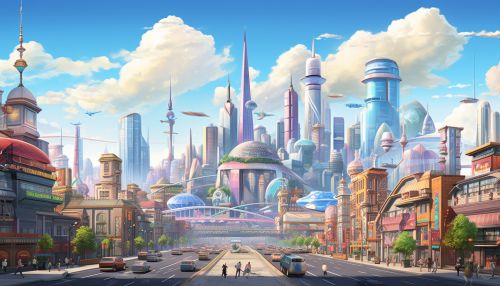Economy
Overview
The economy is a social domain that emphasizes the practices, discourses, and material expressions associated with the production, use, and management of resources. It is a complex system that involves individuals, businesses, and governments making decisions about the allocation of resources to satisfy their needs and wants. The economy is influenced by a variety of factors, including government policy, technology, and social trends.
Economic Systems
Economic systems are the means by which societies organize and distribute their resources, goods, and services. There are three main types of economic systems: market economies, command economies, and mixed economies.
Market Economy
A market economy is an economic system in which economic decisions and the pricing of goods and services are guided solely by the aggregate interactions of a country's individual citizens and businesses. There is little government intervention or central planning.
Command Economy
A command economy is organized by a centralized government that owns most, if not all, businesses and whose officials direct all the factors of production.
Mixed Economy
A mixed economy is a system that combines aspects of both capitalism and socialism. It includes a variety of public and private control, reflecting characteristics of both market and planned economies.
Economic Indicators
Economic indicators are statistics that provide valuable information about the overall health of the economy. They can be used to analyze economic performance and predict future trends. These include indicators like GDP, unemployment rates, and inflation rates.
Gross Domestic Product
Gross Domestic Product (GDP) is the total value of all goods and services produced by a country in a given period. It serves as a comprehensive measure of a nation’s overall economic activity.
Unemployment Rate
The unemployment rate is the percentage of the total labor force that is jobless and actively seeking employment.
Inflation Rate
The inflation rate is the rate at which the general level of prices for goods and services is rising, and subsequently, purchasing power is falling.
Economic Theories
Economic theories are models that economists develop to explain different aspects of economic behavior. These theories form the basis for economic policy and decision-making.
Classical Economics
Classical economics is a school of thought that believes that the economy can regulate itself through the relationships of supply and demand.
Keynesian Economics
Keynesian economics is an economic theory stating that government intervention is necessary to stabilize the economy during periods of recession and inflation.
Neoclassical Economics
Neoclassical economics is an approach to economics that relates supply and demand to an individual's rationality and his ability to maximize utility or profit.
Economic Policies
Economic policies are strategies and actions that governments take to manage the economy. These policies can involve actions that manage the money supply, regulate industry, or manage fiscal spending.
Monetary Policy
Monetary policy involves the management of the money supply and interest rates by central banks to control inflation and stabilize the economy.
Fiscal Policy
Fiscal policy involves the use of government revenue collection (taxation) and expenditure (spending) to influence the economy.
Trade Policy
Trade policy involves the regulations and agreements that control imports and exports to foreign countries.
Conclusion
The economy is a complex and multifaceted system that impacts every aspect of our lives. Understanding its structures, theories, and policies can help individuals and businesses make informed decisions and contribute to the overall health and stability of the economy.


